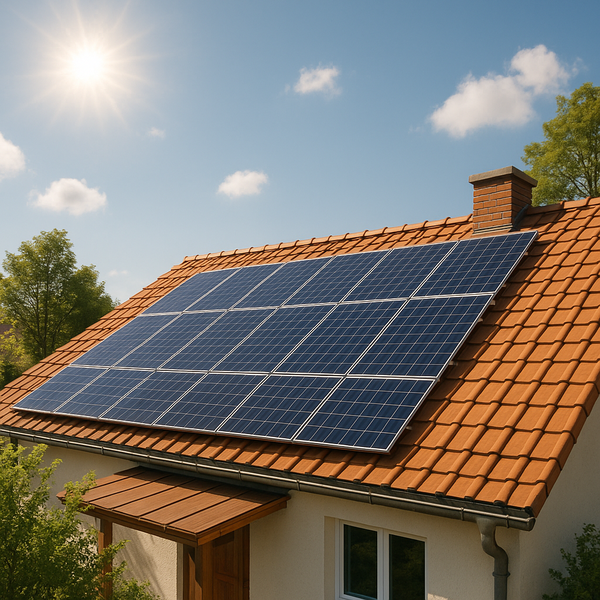
Harnessing the power of the sun through solar panel installation is becoming an increasingly popular choice for homeowners in India. Not only does it offer a sustainable energy solution, but it also presents a significant opportunity to drastically reduce or even eliminate your monthly electricity bills. Understanding the process and the different system sizes available is the first step towards making this smart investment for your home and future.
Why Go Solar in India?
India's geographical location blesses it with abundant sunshine throughout most of the year, making it an ideal country for solar energy generation. Installing solar panels on your rooftop allows you to convert this free natural resource into usable electricity for your home. This directly offsets the power you would otherwise draw from the grid, leading to substantial savings on your electricity bills over time. Beyond the financial benefits, adopting solar power contributes to a cleaner environment by reducing reliance on fossil fuels, lowering your carbon footprint, and promoting energy independence.
Understanding Solar System Sizes: 2kW, 4kW, 6kW, and 10kW
Solar power systems are rated in kilowatts (kW), which indicates their capacity to generate electricity. The right size for your home depends on your average electricity consumption, roof space availability, and budget. Here's a breakdown of common residential sizes:
2kW Solar System
A 2kW system is typically suitable for smaller homes or apartments with lower electricity consumption, perhaps using only basic appliances like lights, fans, and a television. It can generate enough power to significantly reduce bills, potentially covering a substantial portion of energy needs for a small family.
4kW Solar System
A 4kW system is a popular choice for medium-sized homes with moderate electricity usage, including appliances like air conditioners (used sparingly), refrigerators, and other standard household electronics. This size can often cover most, if not all, of the home's electricity requirements, leading to significant savings.
6kW Solar System
Larger homes or those with higher electricity consumption, perhaps running multiple air conditioners, water heaters, or other power-hungry appliances frequently, might benefit from a 6kW system. This capacity is designed to meet substantial energy demands and can result in very low or even zero electricity bills.
10kW Solar System
A 10kW system is considered a large residential setup, suitable for very large homes or properties with exceptionally high energy needs. This size is often chosen by homeowners who want to maximize their energy independence, potentially power multiple ACs simultaneously, or even generate surplus power to potentially feed back into the grid (if net-metering is available and opted for).
Choosing the right size requires an assessment of your past electricity bills (to understand consumption patterns) and a site survey by a qualified solar installer to check roof suitability and orientation.
The Solar Panel Installation Process: A Simple Guide
Installing solar panels is a multi-step process that is best handled by professional installers. Here's a general overview:
1. **Site Assessment and Consultation:** A solar company representative visits your home to assess your roof's condition, size, orientation, and shading. They discuss your energy needs and recommend a suitable system size and type.
2. **System Design:** Based on the assessment and your requirements, a detailed system design is created, including panel layout, inverter type, and wiring plan.
3. **Approvals and Paperwork:** The solar company assists with obtaining necessary approvals from the local electricity distribution company and applying for any available government subsidies or net-metering connections.
4. **Installation:** This involves mounting the solar panels on your rooftop using a racking system, installing the inverter (which converts DC power from panels to AC power for your home), wiring the system, and connecting it to your home's electrical panel and the grid.
5. **Inspection and Commissioning:** After installation, the system is inspected by the electricity distribution company. Once approved, the system is commissioned and switched on, and you start generating your own electricity.
6. **Monitoring:** Most modern systems come with monitoring capabilities, allowing you to track your system's performance and energy generation via a mobile app or online portal.
Government Subsidies and Schemes in India
The Indian government has been actively promoting solar energy adoption through various initiatives. Subsidies are often available for residential rooftop solar systems, particularly for smaller capacities. Schemes like the National Portal for Rooftop Solar aim to streamline the process and provide financial assistance. It's crucial to check the latest schemes and eligibility criteria through official government websites or by consulting registered solar installers.
Things to Consider Before Installing
Before you commit to installing solar panels, consider the following:
* **Roof Condition:** Is your roof sturdy enough to support the weight of the panels? Will it need repairs soon? It's best to fix any roof issues before installation.
* **Roof Shading:** Are there trees, buildings, or other structures that cast significant shade on your roof during the day? Shading can significantly reduce the efficiency of your solar panels.
* **Budget and Financing:** While a significant upfront investment, solar panels offer long-term savings. Explore financing options like solar loans or EMI plans offered by banks.
* **Installer Reputation:** Choose a reputable and experienced solar installation company with good reviews and certifications.
* **Warranty:** Understand the warranty provided on the panels, inverter, and installation work.
Installing solar panels is a forward-thinking decision for Indian homeowners looking to gain energy independence and make substantial savings on their electricity bills. By understanding the system sizes available, the installation process, and leveraging government support, you can confidently transition to clean, renewable energy. It's an investment that pays off for years to come, benefiting both your wallet and the planet.

